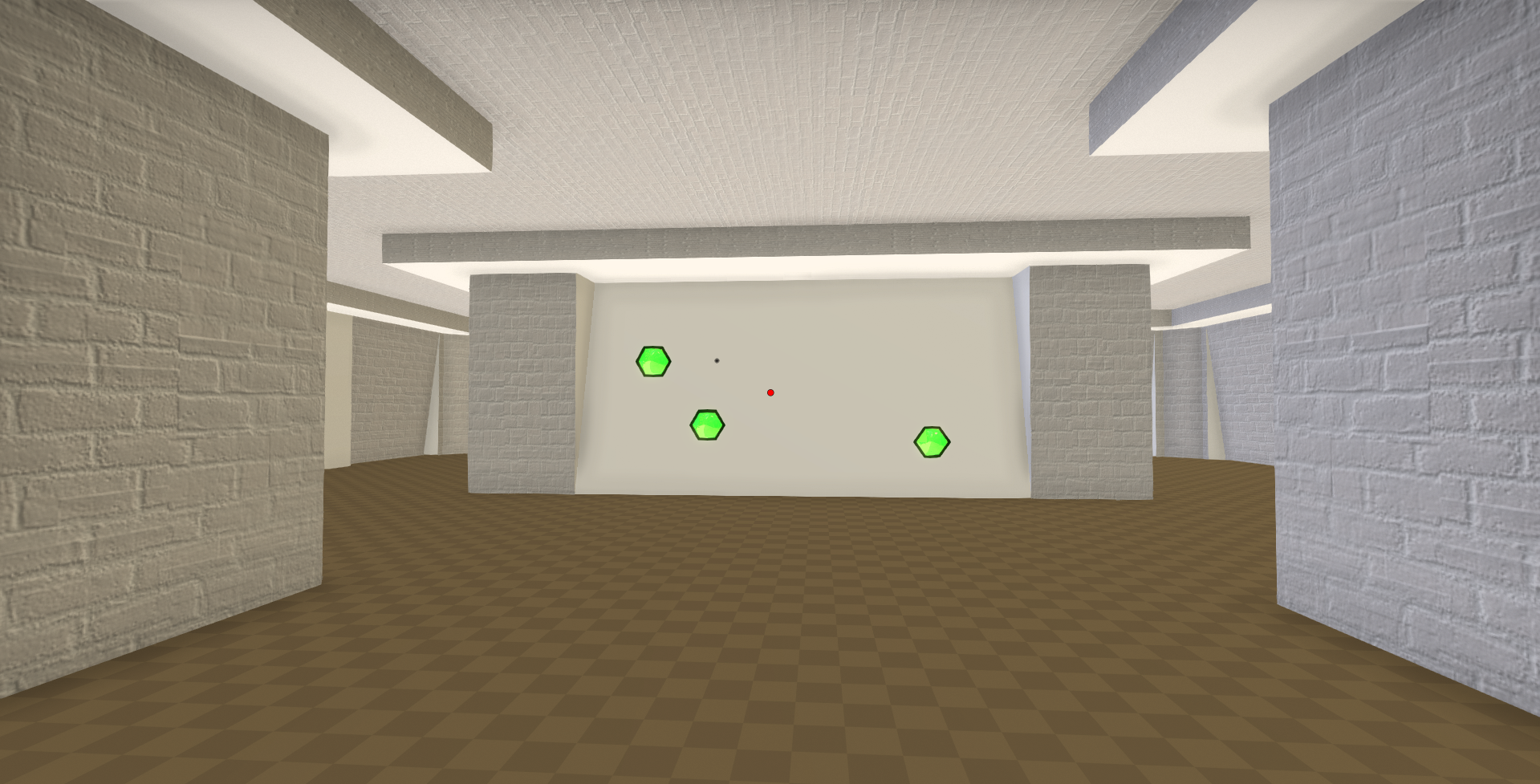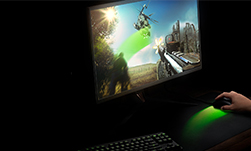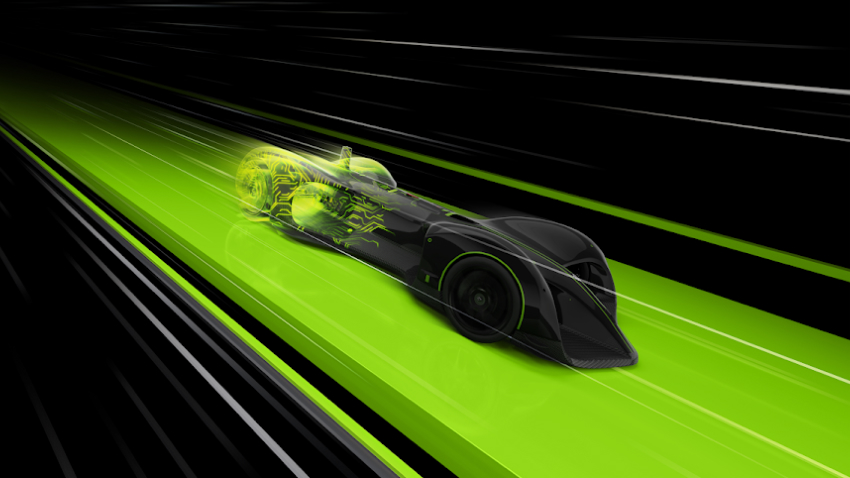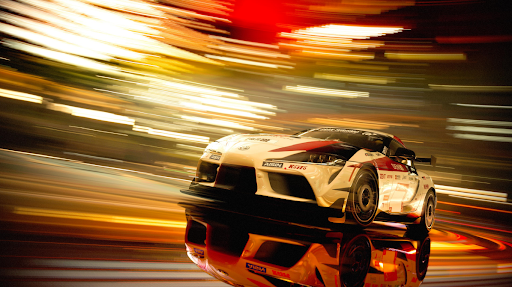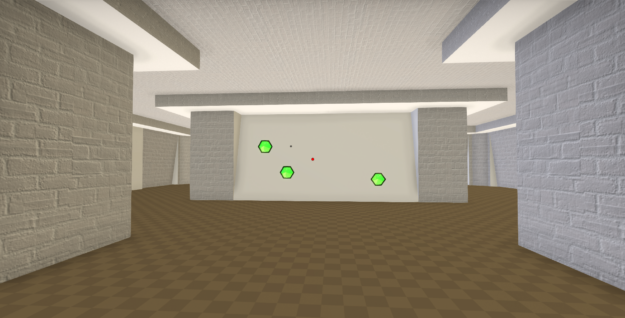
Competitive gamers play games to win and get most of their enjoyment from doing well. In fact, the entire field of esports is based on this style of play, where every possible advantage is sought out to dominate the competition. FPS games like Counter-Strike, Overwatch, and Valorant allow players to compete at many skill levels in the online ladders to see who comes out on top. Competitive gamers seek the highest refresh rates and lowest latency. Based on this trend, we wanted to figure out just how much improving computer system latency helps a player in aiming.
Players aim faster at lower latency
Several prior studies consider pointing and aiming tasks in the context of a computer system’s added latency. We collected data from Ivkovic, Cattan, Jota, Teather, and MacKenzie in an effort to visualize how latency may change aiming task completion time, similar to how target size and distance are shown to affect task performance (using a combined metric known as “index of difficulty”). We’ve included FPS aiming alongside other aiming tasks because Julian Looser showed that FPS aiming follows a similar response to other pointing tasks. Figure 2 shows the selected results from these studies that had a similar index of difficulty, making it more reasonable to compare them on the same plot.
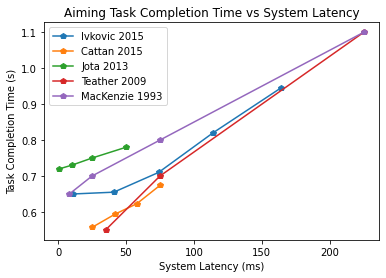
There’s a clear trend that task completion time gets worse as the latency increases. In all studies, the trend shows continued improvements all the way toward zero latency. The lowest latency data point in the Ivkovic study represents a change in the V-SYNC setting, so there may be interacting factors at work there. For more complicated tasks like tracking a moving target, these benefits may multiply due to repeated aiming tasks being required.
Low latency FPS aiming
There isn’t much data available at the low latency levels in the prior publications. This is partly due to the difficulty in creating a system that can consistently reach such low latency levels. To study FPS aiming at low latencies, we decided to use G-SYNC monitors with 240 Hz refresh rate and fast pixel response time.
We also built a simplified FPS game (see Figure 1) that lets us carefully control target parameters like spawn rate, size, and motion type. This game also lets us track all kinds of data about the system, such as system latency, player aiming, and the time it takes to eliminate each target. For more information about using a standalone latency measurement tool, see Latency of 30 ms Benefits First Person Targeting Tasks More Than Refresh Rate Above 60 Hz). Because this game is intended for the scientific study of first person aiming, we called it First Person Science. In this controlled environment, we designed the simple aiming task shown in the following video.
Armed with the ability to collect user performance, we gave this experiment to eight users, each of which completed this simple aiming task 400 times at 12 ms and another 400 times at 20 ms with 8 ms of added delay. The lowest average latency we were able to achieve with our experimental configuration was 12 ms using NVIDIA RTX 2080 Ti at 240 Hz. This is a measurement of the average click-to-photon time as measured by the latency analyzer.
The median measured completion time for this task across all 3200 trials is lower for 12 ms of latency (1.348 sec) than for 20 ms of latency (1.530 sec). These medians are shown with the corresponding standard error metric in Figure 3. Using a Wilcoxon test shows that these medians are different (p-value=0.001). Additional statistical tests could reveal the effect sizes for which these differences are significant.
The task completion times in our experiment are a bit higher than the results for the simple pointing tasks from the prior research publications. This is because the task that we asked our users to perform was more difficult. FPS aiming requires detecting a change or target, determining where the target is, planning for perceived target motion, moving the fingers, hand, arm, and wrist to position the aiming reticle over the target, and finally clicking the mouse button. This sequence of actions can be completed quite rapidly for those who are experienced and plan well, but when the target has complicated shapes and motion characteristics, players may need to continually update their aim to click on the target.

Conclusion
Based on previous publications and our own data, we conclude that reducing the latency of your computer system is beneficial to FPS aiming performance. Based on response time alone, we believe that the most competitive of players should try to have the lowest latency possible. In addition, our latest data show that this improvement is larger than what can be explained by response time alone.
We continue to gather data to study this area and hope to have more to tell you soon. If you’d like to help us with these kinds of studies, you can contribute your play time to the newly announced experiment mode coming soon to KovaaK 2.0.
Additionally, we’re collaborating with various academic institutions and are happy to work with everyone studying the field of esports science to advance the state of the art. If you’re an academic or researcher and would like to talk to us about potential collaborations, feel free to contact us at jspjut@nvidia.com.
